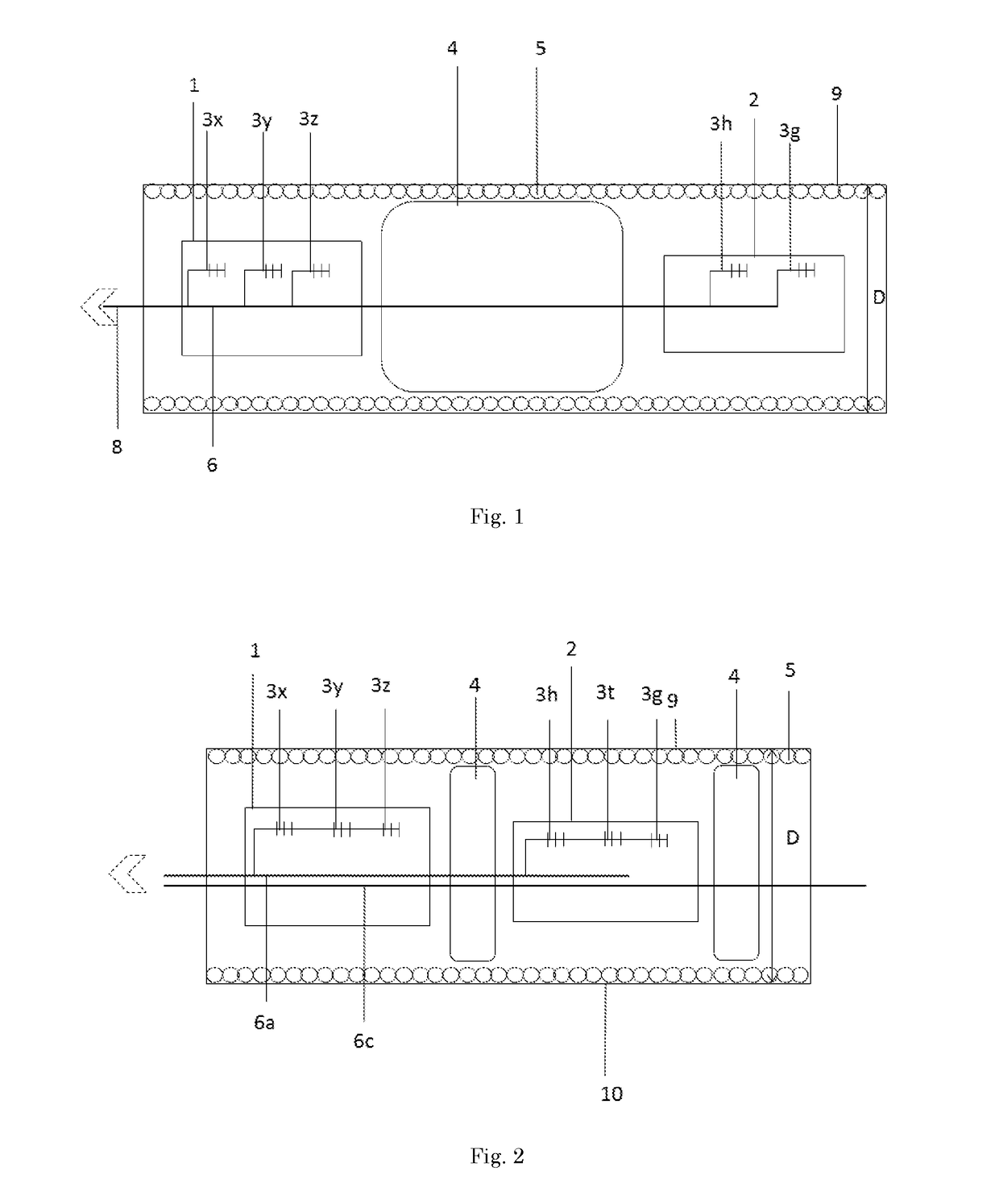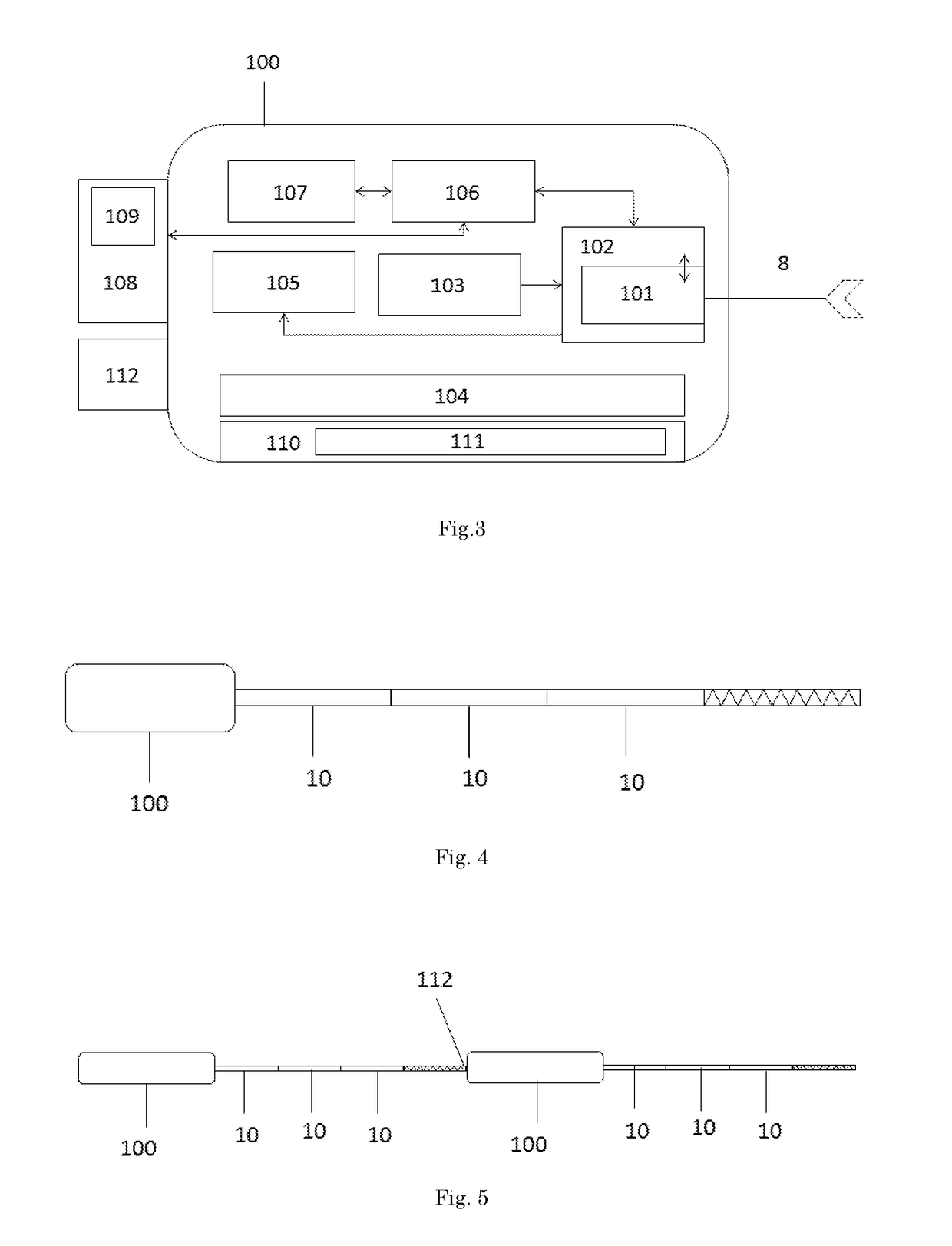Ocean bottom sensing system and method
- Summary
- Abstract
- Description
- Claims
- Application Information
AI Technical Summary
Benefits of technology
Problems solved by technology
Method used
Image
Examples
Embodiment Construction
[0036]Embodiments of the invention relate to ocean bottom sensor systems, as well as deployment techniques thereof.
[0037]In one embodiment, the invention relates to an ocean bottom sensing system (OBS) which can be used for ocean bottom sensing. In this embodiment the system comprises a cable such as seen in FIG. 1, wherein at least a first and a second detector (1, 2) are present, further comprising intrinsic fiber optic sensors (3x, 3y, 3z, 3t, 3h, 3g). The sensors can be, for example, Fiber Bragg Grating (FBG) accelerometers (3x, 3y, 3z), FBG hydrophones (3h), FBG geophones (3g), FBG pressure meters, and / or other intrinsic fiber optic sensors such as for temperature (3t). The sensors are connected to an optical fiber (6) for the interrogation thereof through the exiting optical fiber bundle (8) which comprises the optical fiber (6). Alternatively each sensor can be connected to an individual optical fiber (6) and more preferably sensors belonging to each specific detector can be ...
PUM
 Login to View More
Login to View More Abstract
Description
Claims
Application Information
 Login to View More
Login to View More - R&D
- Intellectual Property
- Life Sciences
- Materials
- Tech Scout
- Unparalleled Data Quality
- Higher Quality Content
- 60% Fewer Hallucinations
Browse by: Latest US Patents, China's latest patents, Technical Efficacy Thesaurus, Application Domain, Technology Topic, Popular Technical Reports.
© 2025 PatSnap. All rights reserved.Legal|Privacy policy|Modern Slavery Act Transparency Statement|Sitemap|About US| Contact US: help@patsnap.com



